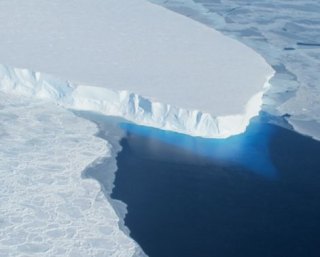Four takeaways on "unstoppable" ice melt

“A large sector of the West Antarctic ice sheet has gone into a state of irreversible retreat,” said Eric Rignot, a glaciologist at the University of California, Irvine and NASA's Jet Propulsion Laboratory in Pasadena, California. Rignot was lead author of a study accepted for publication in the journal Geophysical Research Letters.
Because of warmer ocean temperatures, the ice discharge into the ocean has been increasing during the past four decades.
During a teleconference May 12, scientists said ice in the region could raise sea levels by 4 feet. They did not predict how fast ice will melt into the sea, but Rignot added, “If it continues to retreat at the current rate, we’re looking at the retreat of ice within the next two centuries.”
Here are four takeaways from the teleconference:
1) This isn’t just theory.
“Because of its remoteness, it has been very, very tough to get to this area,” observed Sridhar Anandakrishnan, a professor of geosciences at Pennsylvania State University, University Park, who has studied the area. “That’s where NASA’s ability to look at the continent from space comes in.”
Researchers studied radar observations captured between 1992 and 2011 by the European Earth Remote Sensing satellites to map the changes.
2) The melting isn’t cyclical. It is irreversible. During the teleconference, scientists used the word “unstoppable.”
Scientists call the point where a glacier loses contact with land the grounding line. As the grounding line retreats, more of the glacier becomes waterborne. This leaves less resistance underneath the glacier, so the melting accelerates. Think of it as a chain reaction, with “every process of retreat feeding the next one,” Rignot said. “The only process that would slow down this retreat is if we could find some large hill or mountain.”
3) If only there was a mountain under all that ice – but no such luck.
“We find no mountains or large hills along the way that could act as a barrier to hold these glaciers back,” Rignot said. “They [glaciers] will keep sliding back until the ice is gone.”
4) The melting could accelerate.
If climate warming continues, and “the ice sheet starts to melt at the surface, which it doesn’t now," Rignot said, "it is quite likely that the retreat of these glaciers will actually accelerate in the future, rather than slow down.”
Like us on Facebook and tell us what you think.
Related:
NASA In Brief -- Climate still warming, study finds
NASA In Brief -- Climate satellite launched; companies develop space taxis
5 NASA missions probe Earth's climate: A photo gallery

